Gallery: Vivid Science Visualizations
Cosmos Web

The 2011 International Science and Engineering Visualization Challenge winners include this informational poster, which traces galaxies and dark matter throughout the universe.
In a Mouse's Eye
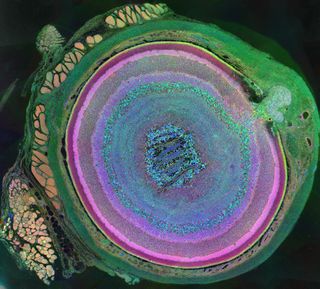
This computational molecular phenotype image of a mouse's eye reveals the diversity of cell metabolism in the retina. The optic nerve is in the upper right of the image. The rectus muscles can be seen in red and gold, attached to the green sclera (the white part of the eye). Retinal layers appear in a rainbow of colors from light gold to pink and purple, while other cells show up in blue and green.
Cool as a ...
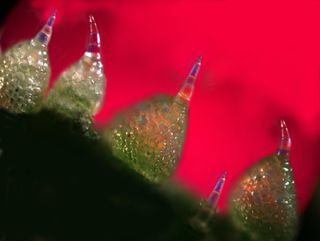
This honorable mention photo is the skin of an immature cucumber, magnified 800 times. These structures are called "trichomes," and they act as little spears, protecting the young vegetable from plant-eaters. The lower part of the trichomes contains bitter, toxic chemicals that make herbivores go "ick!"
False Cliff

It's not the edge of the Grand Canyon; this People's Choice winner was created by placing a layered compound called Ti3AIC2 in hydrofluoric acid. The acid selectively etches away some layers of the compound, creating this odd scene.
Attack of the Antibody
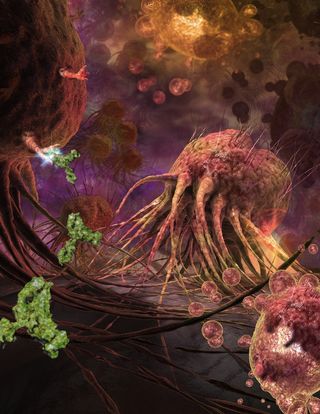
This honorable mention illustration shows tumor death-cell receptors (DR5) on breast cancer cells targeted by the antibody TRA-8.
Teeny-Tiny Tubes
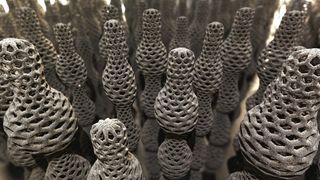
This three-dimensional illustration, which garnered an honorable mention, shows the production of carbon nanotubes. University of Nebraska-Lincoln electrical engineer Yongfeng Lu discovered a laser-based production technique that can create these nanotubes to careful specifications.
The Color of Math
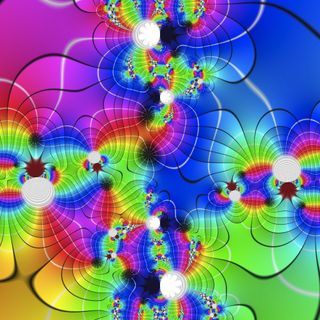
This honorable mention visualization shows the visualization of a complex function using colors to represent every complex number. Complex functions are important in math, physics and engineering.
Sign up for the Live Science daily newsletter now
Get the world’s most fascinating discoveries delivered straight to your inbox.
Cell Separation
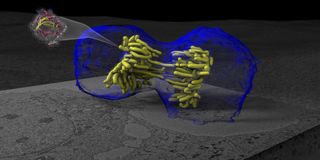
This image of cell separation garnered a People's Choice award for its creator. The cell membrane is shown in blue and the cell's chromosomes in yellow as the cell divides or undergoes mitosis.
Ebola Unveiled
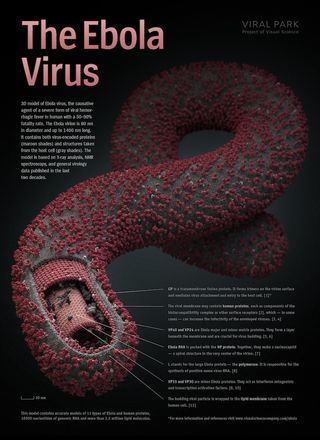
This honorable mention poster reveals the inner and outer workings of the deadly virus Ebola.
Foldit
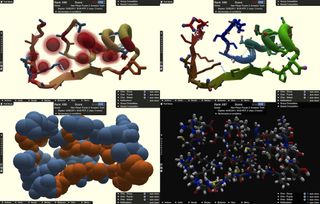
A screengrab from a winning interactive game called "Foldit" that allows players to compete against one another to fold the most efficient protein shape for a task.
The Power of Minus Ten
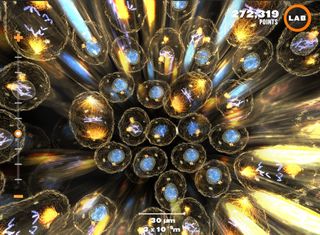
Taking an honorable mention in the gaming category, The Power of Minus Ten allows players to zoom in on the human body at different levels of magnification, all the way down to the molecular level as seen in this screengrab.

Stephanie Pappas is a contributing writer for Live Science, covering topics ranging from geoscience to archaeology to the human brain and behavior. She was previously a senior writer for Live Science but is now a freelancer based in Denver, Colorado, and regularly contributes to Scientific American and The Monitor, the monthly magazine of the American Psychological Association. Stephanie received a bachelor's degree in psychology from the University of South Carolina and a graduate certificate in science communication from the University of California, Santa Cruz.









